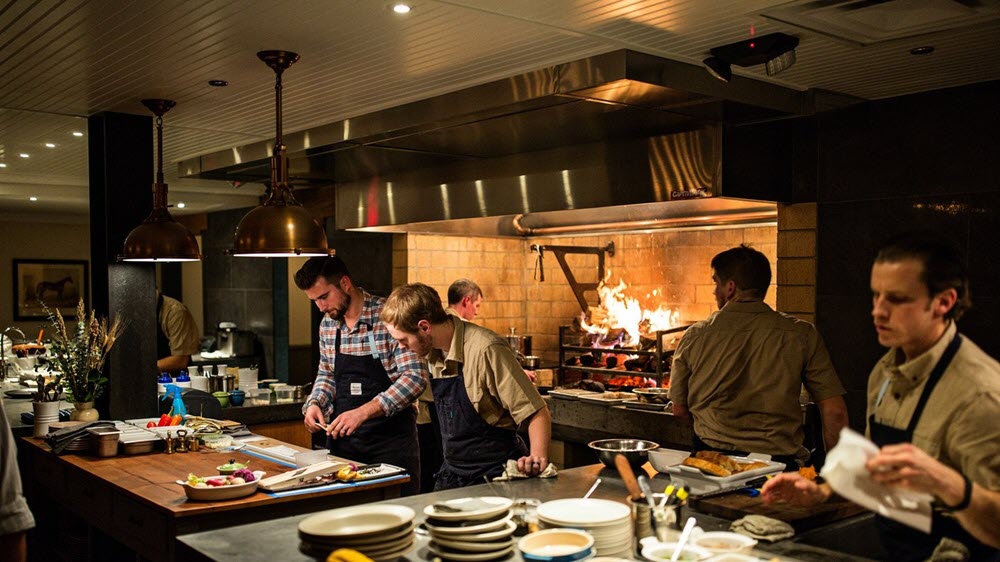The permit to use a kitchen for business purposes can be achieved from agency’s depending on types of products and food items you produce. You will be responsible to know and adhere to all guidelines, requirements, codes of conduct issued by governmental agencies.
This can be controlled through SOP’s where it is defined how tasks are carried out and the required steps that should be taken. It is important the kitchen staff ensures approved SOP’s are implemented and used as part of the processes. If any violation is observed during food preparation, cooking or storage which can result in any danger or harm to staff or general public, this must be reported and actions should be taken to prevent reoccurrence. This could include updating the standard operating procedure for the kitchen.
General Guidelines for a Standard Operating Procedure for the Kitchen
Below are some of the general guidelines which should always be considered for the kitchen:
- Always remember safety is first.
- The Material Safety Data Sheet (MSDS) must be displayed in a way they are accessible to everyone.
- No jewelry is allowed in the kitchen and that applies to all staff. Earrings, rings bracelets, etc. must be removed before entering the kitchen to avoid them being dropped in the food.
- Wear clean and fireless clothes that will keep the hygiene of the products and protect staff from burns.
- Keep personal things in your vehicle or restrooms. No jackets, purses, towel, etc. should be placed in kitchen or anywhere at food processing area.
- Staff should wear right apron or chef’s uniform effectively, hairnets, beard covers, caps, or other hair restraints that will prevent their hair getting into the food they prepare.
Equipment Facility
- Do not leave front or back doors open unless you are in the process of moving items through them. Open doors allow dust, insects, small animals and rodents to enter in kitchen.
- All trash containers should be with bag liners before use.
- Ensure all trash goes into a dumpster when removed from the kitchen.
Storage
Dry storage (cages and pallet)
Another item to be covered in the standard operating procedure for the kitchen is storage. All items and areas must be easily identifiable and tagged with client’s name. Open food items must be airtight covered in containers and tagged with containers contents. All items must be placed on pallets or shelves off the ground. The storing environment must be kept clean and swept all the time.
Freezer storage
All stored items must be identifiable and tagged with client’s name and date. Food items must be airtight stored, and areas approved by clients. Be careful of sanitation guidelines that dictate raw meats, seafood, poultry, etc. If any items are not stored correctly and without labels, they should be removed and disposed of immediately. If leakages or spills are found then mop the area immediately.
Starting and Signing-in
- Before entering the kitchen, complete the production sheets and signing in sheet which include items such as time and tasks.
- Gather all needed material to prepare your workspace. Make sure garbage bags, aprons, hairnets and sanitizer bottles are available before you start.
- Report any issues seen as it is important to report conditions of kitchen as you found it.
- Wash your hands and sanitize all equipment before using them.
During Production
- Carefully implement the operating guidelines for each equipment within the facility. Technical instruction must be received and reviewed before using any new technical kitchen equipment for first time. Only people trained on equipment should be able to use it.
- Make sure to turn on the ventilation systems and set it up as required for the job carried out. Do not forget to turn of exhaust system after completing your task.
- The kitchen should have a prep sink. A prep sink is only to wash fresh produce and meats. However, dishes must be cleaned in washing area, not in prep sink.
- Keep cleaning liquid bottles away from cooking area and never store them at the same level or above food prep areas.
At the Close of Production
- Break down and wash carefully each piece of equipment used during cooking. Check the adjacent equipment and areas for splashes and spills.
- Wash and sanitize all sinks in the cooking area. Also sanitize each workstation including handles of oven, refrigerators, other equipment and light switches etc.
- No raw material or food products should be left in the kitchen or on the floor. All foods must be correctly stored and labeled with date.
- Remove all trash bags from the kitchen and dispose of them at an approved location.
Last Check
- If you are the last one to leave the kitchen, make sure to turn off all lights.
- Ensure all equipment is in its right places.
- Write down comments if there is an opportunity to improve.
- Finally, submit to production sheet to manager.
